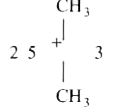A cleansing agent is mixed with water in the ratio 1:7. In 400 L of solution, find the amount of the cleansing agent.
The correct Answer is:50L
To solve the problem step by step, we will follow the given information about the ratio of the cleansing agent to water and the total volume of the solution.
1. Understand the Ratio: The cleansing agent is mixed with water in the ratio of 1:7. This means for every 1 part of cleansing agent, there are 7 parts of water.
2. Define Variables: Let the amount of cleansing agent be x liters. According to the ratio, the amount of water will be 7x liters.
3. Set Up the Equation: The total volume of the solution is given as 400 liters. Therefore, we can write the equation:
x+7x=400
4. Combine Like Terms: Simplifying the left side of the equation gives:
8x=400
5. Solve for x: To find the value of x, divide both sides of the equation by 8:
x=4008
x=50
6. Conclusion: The amount of cleansing agent is 50 liters.
Final Answer:
The amount of the cleansing agent in 400 liters of solution is 50 liters.
x+7x=400
8x=400
x=4008
x=50
The amount of the cleansing agent in 400 liters of solution is 50 liters.
Topper's Solved these Questions
- RATIO AND PROPORTIONBOOK - ICSECHAPTER - RATIO AND PROPORTIONEXERCISE - Warm-up-Exercise
2 Videos
- RATIO AND PROPORTIONBOOK - ICSECHAPTER - RATIO AND PROPORTIONEXERCISE - Challenge
1 Videos
- RATIO AND PROPORTIONBOOK - ICSECHAPTER - RATIO AND PROPORTIONEXERCISE - Exercise 8.1
33 Videos
- PROPERTIES OF TRIANGLESBOOK - ICSECHAPTER - PROPERTIES OF TRIANGLESEXERCISE - Exercise 18B
10 Videos
- RATIONAL NUMBERS BOOK - ICSECHAPTER - RATIONAL NUMBERS EXERCISE - REVISION EXERCISE (FILL IN THE BOXES).
4 Videos
Similar Questions
Knowledge Check
Passage-3
Soaps are the detergents used since long. Soaps used for cleansing purpose are sodium or potassium salts of long chain fatty acids such as stearic acid, palmitic acid. These cannot be used with hard water. Synthetic detergents are cleansing agents which have all the properties of soap but which actually do not contain any soap. These can be used both in soft water and hard water as they give foam even in hard water.
Which is not true for a detergent molecule ?AIt has a non polar organic part and a polar groupBIt has a surface active reagentCIt is a sodium salt of a fatty acidDIt is not easily biodegradedPassage-3
Soaps are the detergents used since long. Soaps used for cleansing purpose are sodium or potassium salts of long chain fatty acids such as stearic acid, palmitic acid. These cannot be used with hard water. Synthetic detergents are cleansing agents which have all the properties of soap but which actually do not contain any soap. These can be used both in soft water and hard water as they give foam even in hard water.
Which one of the following is not a surfactant?A BCH3(CH2)4CH2NH2CCH3−(CH2)16CH2OSO−2Na+DOHC−(CH2)4CH2COO−Na+
BCH3(CH2)4CH2NH2CCH3−(CH2)16CH2OSO−2Na+DOHC−(CH2)4CH2COO−Na+Passage-3
Soaps are the detergents used since long. Soaps used for cleansing purpose are sodium or potassium salts of long chain fatty acids such as stearic acid, palmitic acid. These cannot be used with hard water. Synthetic detergents are cleansing agents which have all the properties of soap but which actually do not contain any soap. These can be used both in soft water and hard water as they give foam even in hard water.
Which of the following is called invert soap?ASodium stearateBCetyl trimethyl ammonium bromideCSodium lauryl sulphateDTetraethyl ammonium chloride
In a mixed fruit drink, orange juice, apple juice, and pineapple juice are mixed in the ratio 11:10:9. Find the amount of the three juices in a carton of IL 200 ml of juice.
View SolutionA certain amount has been divided into two parts in the ratio 4 : 7 . If the first part is ₹ 600, find
the second part and
View SolutionA bag has 50, 100, and 200 notes in the ratio 3:7:5. If there are 90 notes in the bag find the amount of money in the bag.
View SolutionA mixed fruit juice carton has apple and pineapple juice in the ratio 4:9. If the quantity of the apple juice is 4.8 L, find the quantity of juice in the carton and also the amount of pineapple juice in the carton.
View SolutionA purse contains रु1 and 2 coins in the ratio 7:4. If there are 242 coins in the purse, find the total amount of money in the purse.
View Solution
